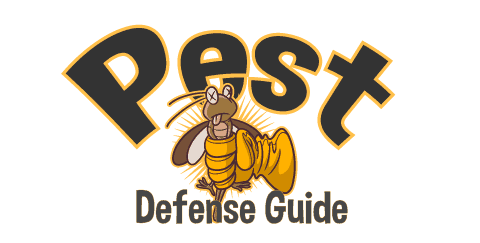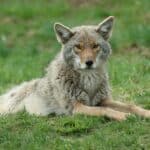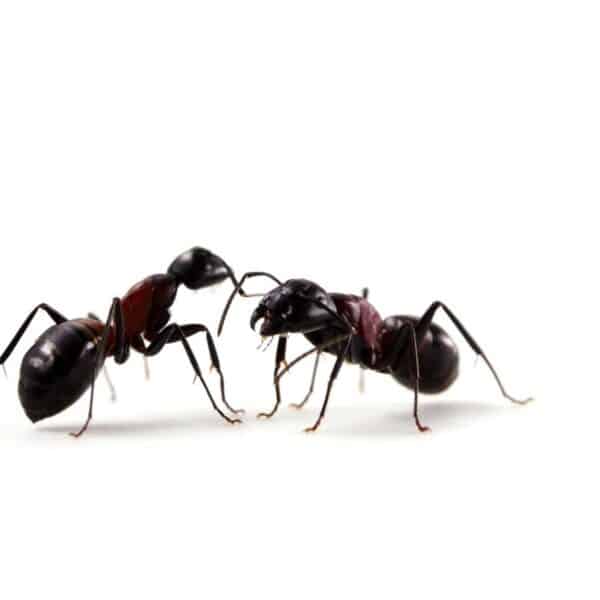Creating a safe and healthy environment for our little ones is paramount to every parent. As we embark on the journey of parenthood, it becomes our duty to protect our babies from potential harm and ensure their well-being in every possible way. One aspect often overlooked in this quest for safety is pest control.
However, traditional pest control methods often involve using chemicals that may pose risks to the health and development of infants. Baby-friendly pest control refers to a set of practices and strategies aimed at eliminating pests from our living spaces while prioritizing the safety and health of our babies.
It focuses on utilizing non-toxic, eco-friendly approaches and pose minimal risk to infants. By adopting baby friendly pest control methods, we can effectively manage unwanted pests without compromising the well-being of our little ones.
Importance of creating a safe and healthy environment for babies
The vulnerability of infants makes it crucial for us as parents or caregivers to create an environment that supports their growth, development, and overall health. Babies spend most of their time indoors during their early years, making the quality of indoor air and surroundings essential factors in their well-being. While common household pests such as ants, cockroaches, mosquitoes may seem like minor nuisances, they can carry diseases or trigger allergic reactions that pose significant risks for babies.
Infants have developing immune systems that are more susceptible to infections or adverse reactions caused by exposure to certain chemicals or allergens used in traditional pest control methods. This vulnerability emphasizes the need for a baby-friendly approach when dealing with pesky intruders in our homes.
Overview of the outline
This article provides comprehensive guidance on adopting baby-friendly pest control measures while ensuring your baby’s safety remains the top priority. It will delve into different aspects of pest control that are safe for babies, including natural pest control methods, prevention and maintenance tips, professional services, and additional baby-friendly measures.
By following this outline, you will gain valuable knowledge on how to create a pest-free environment without compromising the health and safety of your baby. Let’s explore the world of baby-friendly pest control together and learn how we can protect our little ones from both pests and harmful chemicals!
Understanding Common Household Pests
A Multitude of Intruders: The Common Pests Found in Homes
When it comes to sharing our living spaces with unwanted visitors, homes often play host to various pests. Among the most frequent culprits are ants, cockroaches, and mosquitoes.
Ants, those tiny yet highly organized creatures, can infiltrate our kitchens in search of food crumbs and sugary snacks. Conversely, cockroaches are notorious for their resilience and ability to thrive in unclean environments.
These elusive insects tend to hide in dark crevices and can pose serious health risks if they contaminate surfaces with their droppings or shed skin. The persistent buzz of mosquitoes may disrupt peaceful evenings and carry diseases such as West Nile virus or dengue fever.
Potential Health Risks: A Threat to Our Little Ones
While pests are a nuisance for everyone, babies are particularly vulnerable to their adverse effects. Insects like ants and cockroaches can trigger allergies or asthma attacks in infants who have sensitive respiratory systems. Furthermore, babies have a tendency to explore their environment by touching surfaces and putting objects into their mouths – an innocent act that can expose them to harmful bacteria or pathogens left behind by these pests.
Mosquitoes pose an additional threat as they transmit diseases through their bites. This is especially concerning since babies’ immune systems are still developing and may struggle to fend off infections.
The presence of pests not only compromises the cleanliness and hygiene of our homes but also impacts the overall well-being of our little ones. Therefore, understanding these common household pests is crucial in order to protect our babies from potential health risks.
The Importance of Identification: Recognizing Our Unwelcome Guests
Identifying common household pests is essential for effective pest control. Ants, for instance, often leave visible trails as they travel in search of food sources.
They can be distinguished by their tiny size and segmented bodies, with some species featuring a characteristic black or reddish-brown coloration. Cockroaches are nocturnal creatures that possess a flat body shape, long antennae, and wings (although not all species fly).
Their presence is often indicated by their distinct musty odor and brown or dark-colored feces. Mosquitoes are recognized by their slender bodies, long legs, and delicate wings.
The females feed on blood to nourish their eggs and tend to be attracted to standing water sources. By familiarizing ourselves with the specific characteristics of these pests, we can better implement appropriate pest control measures while safeguarding the health and well-being of our babies.
Mitigating the Risks: A Holistic Approach
Addressing the issue of pests in a baby-friendly manner necessitates both understanding the common household pests found in homes and recognizing the potential health risks they pose. By being aware of these risks, parents can take proactive measures to mitigate them.
This includes implementing preventive strategies such as maintaining cleanliness, sealing cracks or crevices where pests may enter, and ensuring proper waste management practices. Furthermore, it is vital for parents to stay informed about safe pest control methods that are specifically designed for use around babies.
Embracing eco-friendly alternatives like natural pest repellents or seeking professional services that utilize non-toxic products will help create a healthy environment where babies can thrive without unnecessary exposure to harmful chemicals. By taking these precautions and understanding common household pests along with their associated health risks for babies, we arm ourselves with knowledge necessary to protect our little ones while maintaining a pest-free home environment.
Introduction to Natural Pest Control Methods as a Baby-Friendly Alternative
When it comes to protecting our little ones from pests, adopting natural pest control methods is not only effective but also ensures the safety and well-being of babies. Unlike conventional pest control methods that often involve harsh chemicals, natural alternatives offer a gentler approach without compromising efficacy.
By utilizing nature’s own remedies, we can create a baby-friendly environment that is free from pests. Natural pest control methods involve harnessing the power of botanicals, minerals, and traps to deter or eliminate unwanted insects.
These methods prioritize the use of non-toxic ingredients and techniques that do not pose any harm to infants or their developing immune systems. Embracing these environmentally friendly approaches not only protects babies from potential chemical exposures but also promotes sustainable living.
Benefits of Using Natural Pest Control Methods
The benefits of opting for natural pest control methods extend beyond the safety aspect for babies. These methods provide a plethora of advantages that make them an appealing choice for any household concerned about their little one’s well-being. Firstly, natural pest control products are non-toxic by nature, which means they do not contain harmful chemicals like synthetic pesticides.
As a result, there is no risk of accidental ingestion or exposure that could lead to adverse health effects in babies. Secondly, these alternatives are environmentally friendly as they do not contribute to air or water pollution.
Furthermore, natural pest control methods are often biodegradable and sustainable. By avoiding the use of synthetic pesticides that can persist in the environment long after application, we play our part in conserving biodiversity and protecting ecosystems for future generations.
Examples of Natural Pest Control Methods
Essential Oils: Repelling Ants with Peppermint Oil
One effective natural pest control method involves the use of essential oils, such as peppermint oil, to repel ants. Ants are deterred by the strong scent of peppermint oil, making it an excellent choice for keeping these tiny invaders at bay.
Simply dilute a few drops of peppermint oil in water and spray it along entry points or areas where ants are commonly found. Not only does this act as a barrier, but it also leaves your home smelling delightful.
Diatomaceous Earth: Controlling Crawling Insects
Diatomaceous earth is a naturally occurring sedimentary rock that can be utilized to control crawling insects such as cockroaches and bed bugs. This substance contains microscopic fossilized algae that, when in contact with insects, damages their exoskeletons and dehydrates them. It is important to use food-grade diatomaceous earth specifically labeled for pest control purposes and apply it strategically in areas where pests frequent, like cracks or crevices.
Sticky Traps: Catching Flying Insects
To combat flying insects like flies or fruit flies without resorting to chemical-laden sprays, sticky traps provide an effective solution. These traps feature adhesive surfaces that attract and capture flying pests upon contact. Placing sticky traps near windows or other areas where flying insects gather can significantly reduce their population while keeping your baby safe from harmful chemicals.
These examples illustrate just a fraction of the natural pest control methods available for creating a baby-friendly environment. By exploring these alternatives and incorporating them into our homes, we ensure that our babies are protected from pests while maintaining their health and well-being.
Prevention and Maintenance Tips
The Importance of Prevention in Pest Control for Baby-Friendly Environments
When it comes to creating a baby-friendly environment, prevention is key in keeping pests at bay. Rather than relying solely on reactive measures, taking proactive steps to prevent pests from entering your home ensures the safety and well-being of your little ones. By adopting a preventive mindset, you can significantly reduce the need for potentially harmful pest control methods.
Tips on Preventing Pests from Entering the Home
To prevent pests from invading your living space, there are several effective measures you can take. Firstly, sealing cracks and crevices in walls and foundations serves as a barrier to deter pests like ants, cockroaches, and spiders. These tiny openings provide easy access points for unwelcome critters.
Secondly, keeping food containers tightly sealed is crucial in preventing pantry pests such as moths and weevils from infesting your dried goods. These insects are attracted to exposed food sources and can quickly become an annoyance if not properly contained.
Additionally, regularly cleaning up spills and crumbs plays a vital role in reducing pest attraction. Even small amounts of leftover food or spills can entice ants or cockroaches into your home.
A clean environment minimizes their incentive to venture indoors. Proper storage of garbage is essential by using sealed containers.
Trash bins that aren’t securely closed may attract unwanted attention from rodents or flies that pose health risks both for babies and adults alike. Ensuring garbage is properly contained mitigates the risk of pest infestation.
Professional Pest Control Options
When to Consider Professional Pest Control Services
While prevention measures are effective in most cases, there may be situations where professional assistance becomes necessary. If you’ve already implemented preventive actions but continue to face persistent pest issues, it might be time to consider calling in the experts. Professional pest control services have the knowledge, experience, and tools to handle more challenging infestations safely.
Choosing a Baby-Friendly Pest Control Company
When selecting a pest control company for your baby-friendly environment, it’s crucial to prioritize their commitment to using non-toxic products safe for babies. Researching companies that employ environmentally friendly and natural pest control methods should be at the top of your checklist.
Furthermore, when inquiring about their approach to minimizing chemical exposure during treatment, ask questions about their methods of application and the duration required before it is safe for your baby to occupy treated areas. It is imperative to choose a company that values the health and safety of both your family and the environment.
Additional Baby-Friendly Measures
Using Organic Baby Products to Minimize Chemical Exposure
Alongside implementing baby-friendly pest control measures, using organic baby products can further minimize chemical exposure for your little ones. Opting for natural and organic skincare items, such as shampoos, lotions, and diapers free from harmful chemicals or synthetic fragrances can provide peace of mind.
Maintaining Good Hygiene Practices to Prevent
Maintaining good hygiene practices not only promotes overall wellness but also helps in preventing pests from entering your home. Regularly washing and sanitizing bottles, pacifiers, toys, and other baby items reduces food sources that may attract pests like flies or cockroaches. Additionally, frequently cleaning floors surfaces with non-toxic cleaning agents eliminates any residue that could entice pests into your living space. Conclusion:
Creating a baby-friendly environment requires diligence and proactive measures against household pests. By prioritizing prevention through sealing cracks, keeping food containers sealed tight





